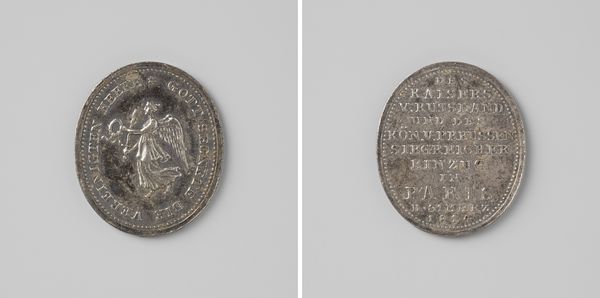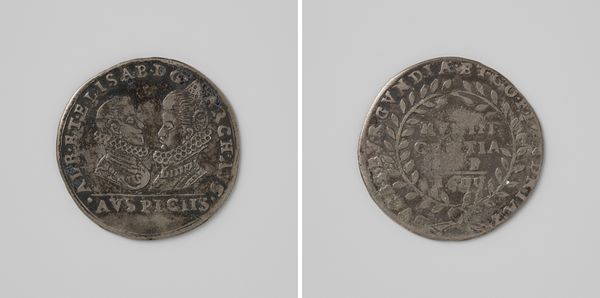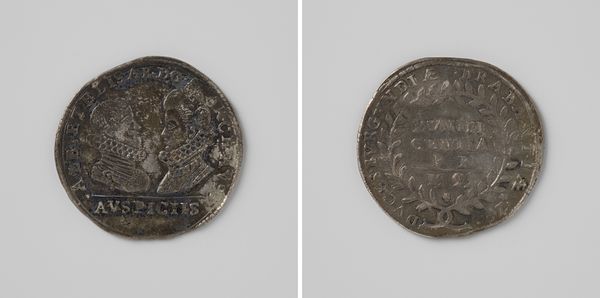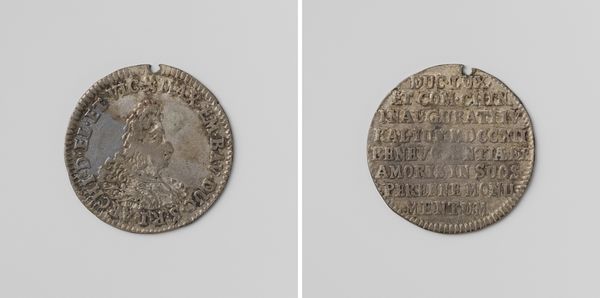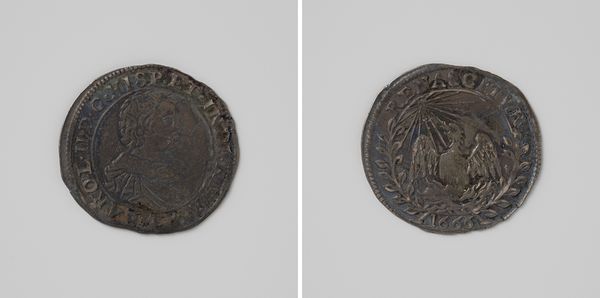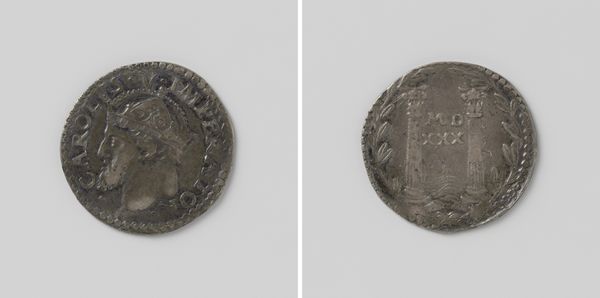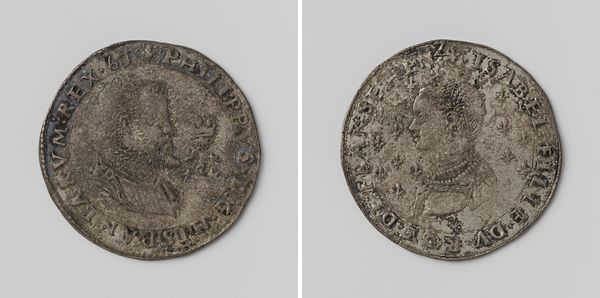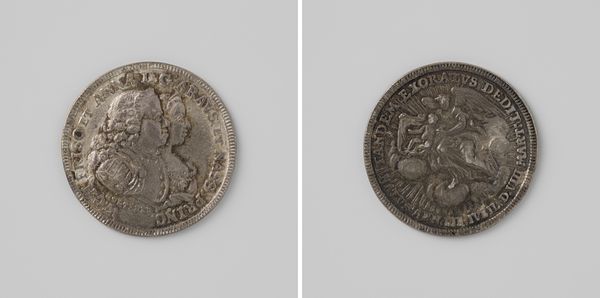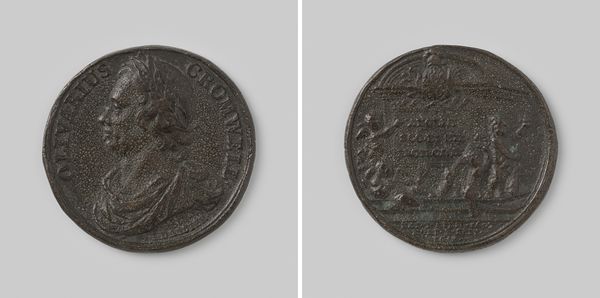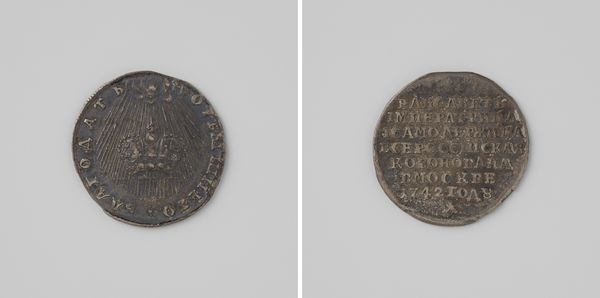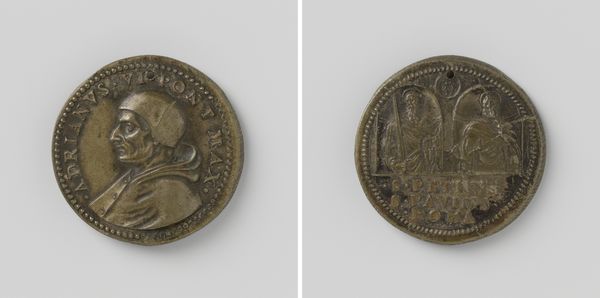
Inhuldiging van Leopold II, Duits keizer, als graaf van Henegouwen en hertog van Bourgondie 1791
0:00
0:00
#
natural stone pattern
#
3d sculpting
#
3d printed part
#
sculpture
#
detailed texture
#
sculptural image
#
unrealistic statue
#
3d shape
#
stoneware
#
statue
Dimensions: diameter 2.1 cm, weight 2.88 gr
Copyright: Rijks Museum: Open Domain
Curator: What a fascinating piece! This is a medal commemorating Leopold II, the Holy Roman Emperor, being recognized as Count of Hainaut and Duke of Burgundy in 1791. The Rijksmuseum holds this particular one. Editor: My first impression is that it seems quite small and… unassuming. The craftsmanship looks very precise, but the overall impact is muted by its diminutive size and the apparent wear over time. I wonder what it's made of. Curator: The material aspect here is central; the metal would have been specifically selected and minted with a distinct purpose. A commemorative medal is meant to circulate and be physically held, forging a material connection between the ruler and the ruled. Its relatively small size also made it easier to disseminate, didn't it? Editor: Indeed, these kinds of objects played a huge role in creating political identity. They weren't just currency; they were tools to propagate an image, even in the face of societal upheaval happening at that precise moment in Europe, like the brewing French revolution. This medal acts as a material claim to power amid rising discontent with aristocratic rule. Curator: Right! The physical impression – its weight, texture – all speak to a culture invested in validating power structures through objects of prestige. Who was crafting these pieces? What kind of workshops or guilds were involved? Their labor contributed to shaping the narrative presented. Editor: Absolutely, and this specific visual and material language was not unintentional. For example, notice how he's presented in profile, a deliberate move connecting Leopold to a lineage of power reminiscent of ancient rulers on coinage. The material makes him more "legitimate". But was this symbolic exercise actually useful or effective? How was the imagery of Leopold actually *received*? Curator: Perhaps understanding the distribution network, who had access, and how these tokens may have been traded or altered would yield insights on its appropriation, even resistance, to this narrative of legitimate rule. Editor: I agree completely. By centering its reception we understand so much more. This humble metal circle really becomes a flashpoint for societal anxieties around power and legitimacy during a period of revolution! Curator: It makes you think differently about the purpose of these coins and other artifacts. Examining these objects with attention to the production can show its ties to social power, but looking at the consumption, you reveal a completely new perspective! Editor: It goes to show you how seemingly insignificant items can unravel really crucial intersectional discourses on identity and authority. Thanks for sharing that point of view.
Comments
No comments
Be the first to comment and join the conversation on the ultimate creative platform.
